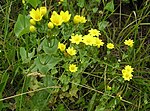Lypiatt
Former civil parishes in GloucestershireGloucestershire geography stubsStroud DistrictUse British English from March 2015Villages in Gloucestershire

Lypiatt is a small village and former civil parish, now in the parish of Miserden, in the Stroud district, in Gloucestershire, England, approximately 4 miles (6 km) east of Stroud. The parish was formed from Stroud in 1894, later in 1894 the parish was abolished to form "Bisley with Lypiatt".The parish is noted for two historic houses: Lypiatt Park, of medieval origins, home of the late Modernist sculptor Lynn Chadwick and his family a neo-Classical manor house, Nether Lypiatt Manor, formerly the home of Violet Gordon-Woodhouse and Prince and Princess Michael of Kent, who sold in 2006 to Paul Drayson.
Excerpt from the Wikipedia article Lypiatt (License: CC BY-SA 3.0, Authors, Images).Lypiatt
Manor Street,
Geographical coordinates (GPS) Address Nearby Places Show on map
Geographical coordinates (GPS)
| Latitude | Longitude |
|---|---|
| N 51.75351 ° | E -2.14047 ° |
Address
Manor Street
Manor Street
GL6 7AX , Bisley-with-Lypiatt
England, United Kingdom
Open on Google Maps










